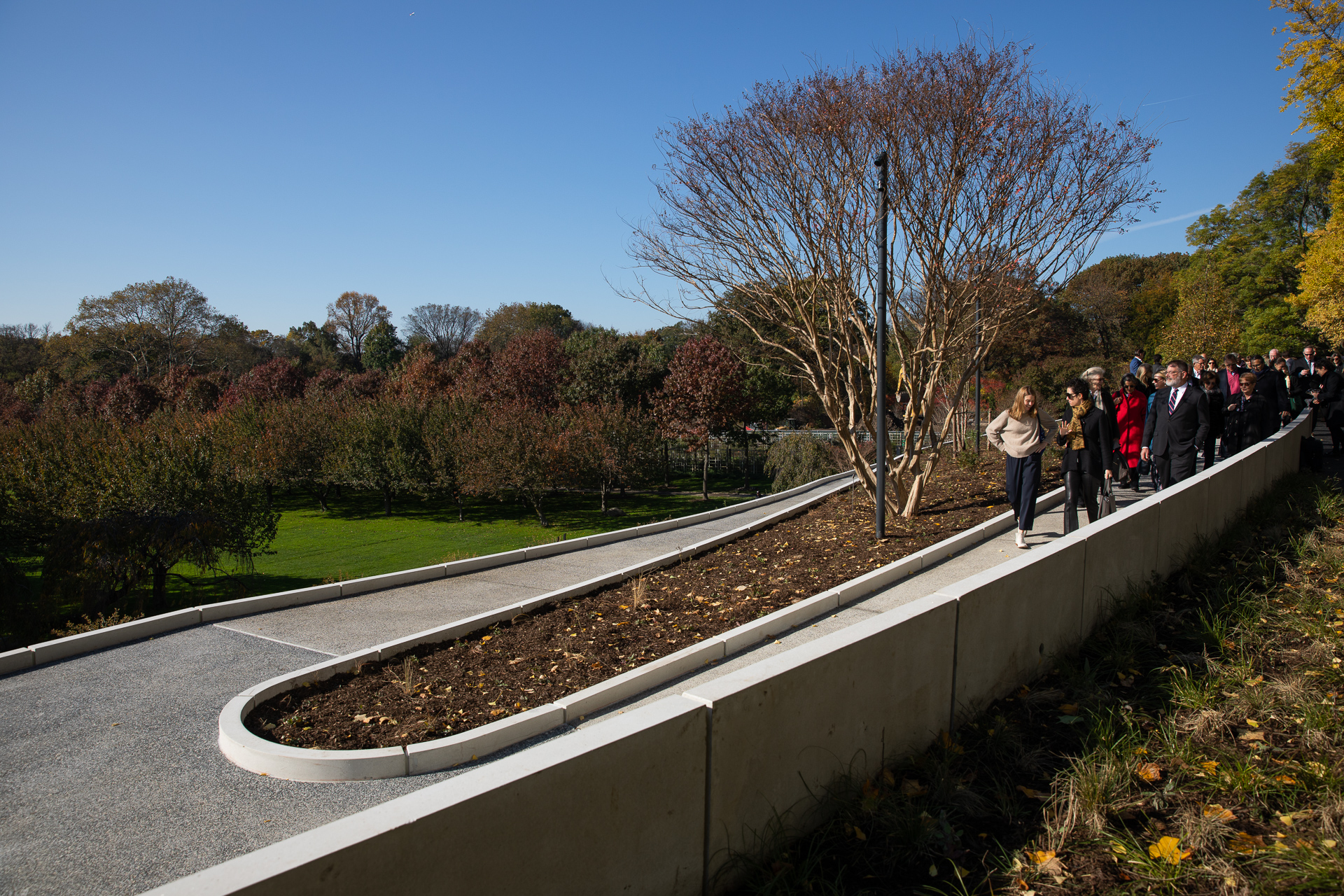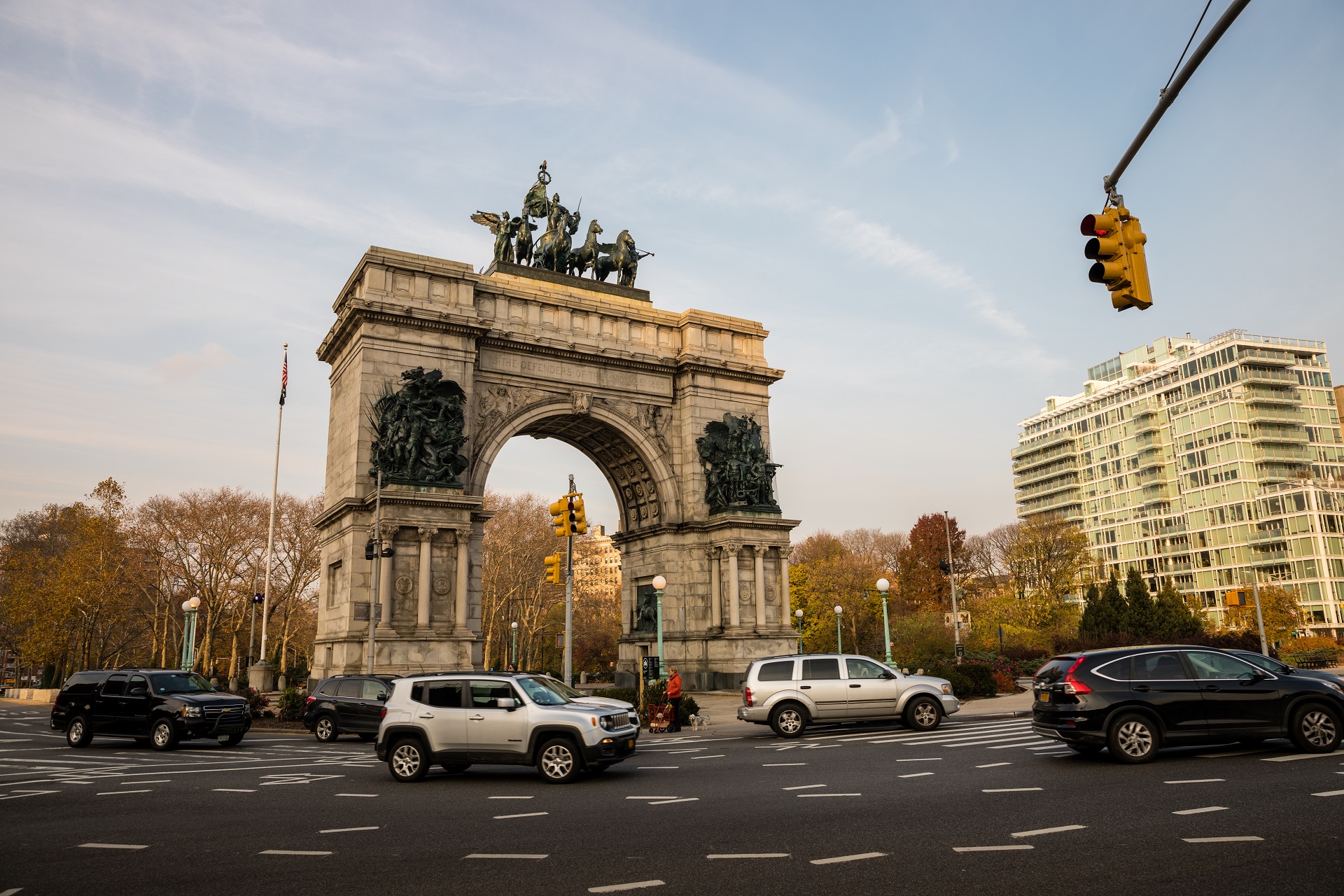Brooklyn Botanic Garden has a new selfie spot (and some new plants too)

Guests at the opening ceremony for Brooklyn Botanic Garden’s Robert W. Wilson Overlook check out the view of the Cherry Esplanade. Eagle photo by Paul Frangipane
Brooklyn just got a new selfie hot spot.
When Brooklyn Botanic Garden’s Cherry Esplanade is bursting with springtime blossoms, the hilltop directly above it will surely become a popular place to snap smiling self portraits.
After the Cherry Blossom Festival is over and the famous flowers are gone, 34 newly planted crape myrtle trees on the previously undeveloped hill will bloom. Their white, pale pink and lavender flowers will likely wind up in countless summer and fall photographs.
